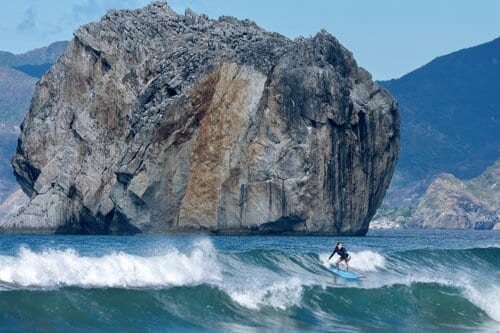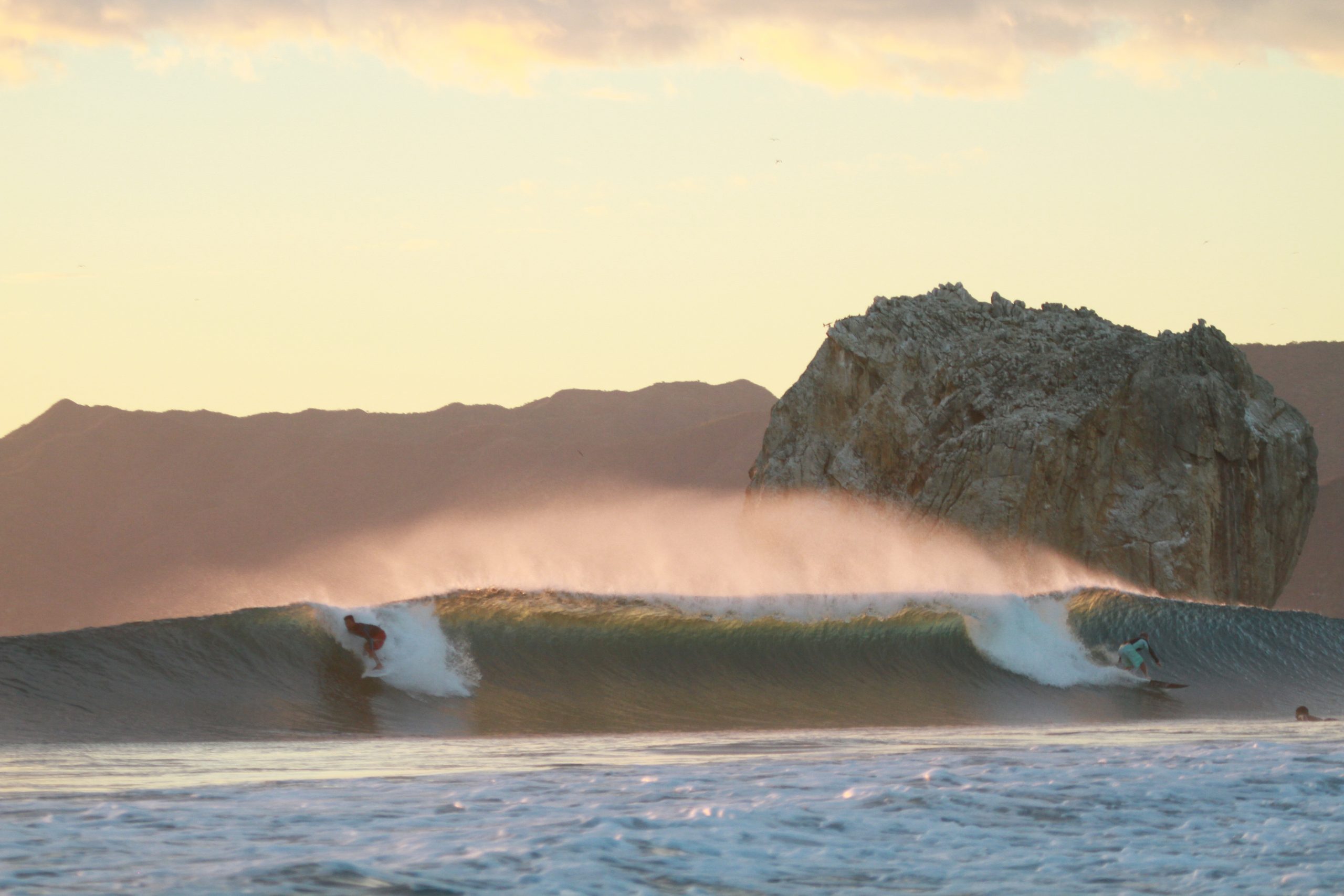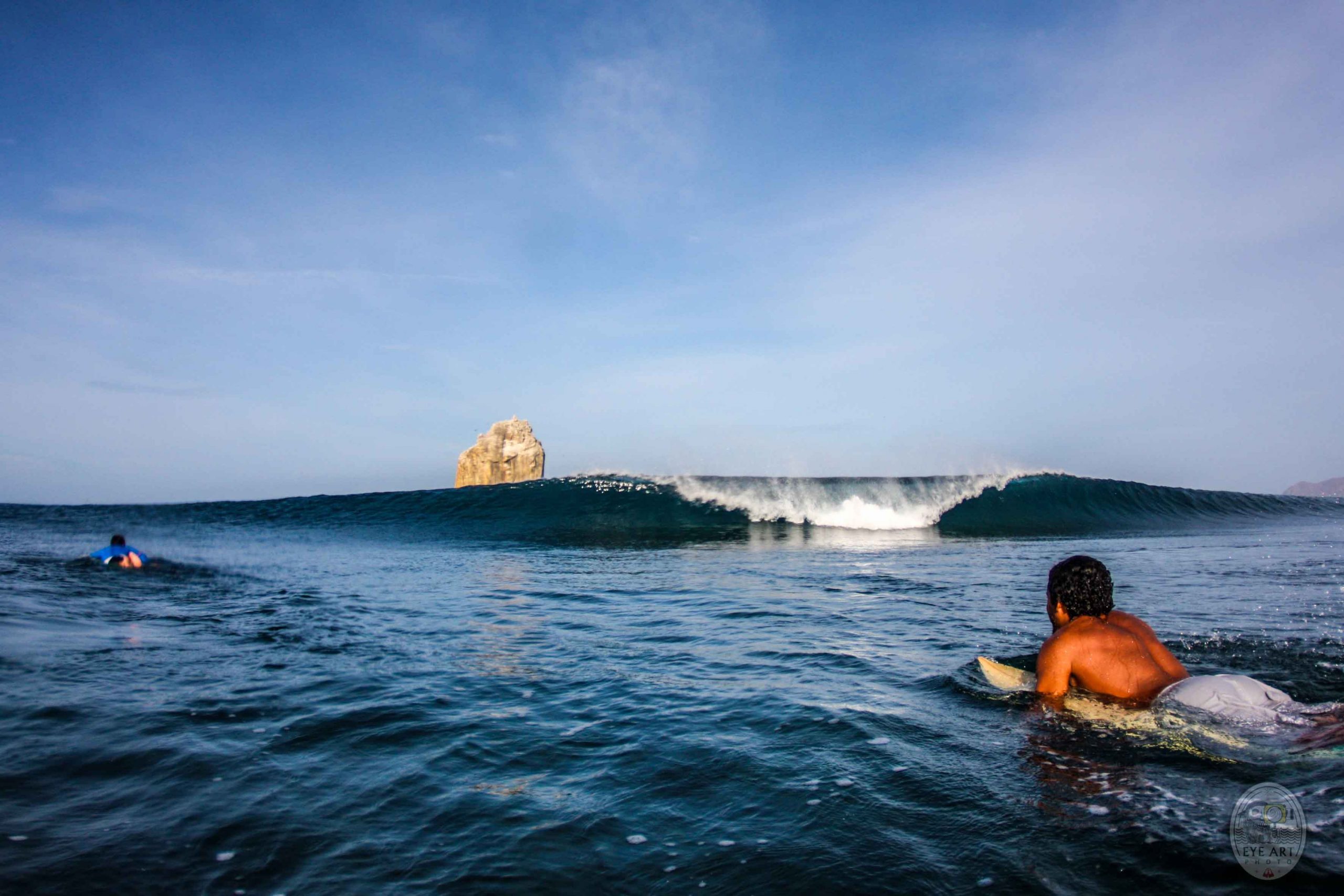
Witch’s Rock
Backed by the mystical rock formation known as “Roca Bruja,” or Witch’s Rock, this beautiful, secluded, world-class surf spot is legendary. Its epic tubes have been documented in such films as Endless Summer II, which showcased Witch’s Rock to the world. Since then, people from all over have come to enjoy the perfect barrels groomed by offshore winds most of the year.
How to get there
Getting to Witch’s Rock is half of the fun. It’s either a short boat ride from Playas del Coco, a longer boat ride from Tamarindo, or a long 4×4 trek via Santa Rosa National Park.
One advantage of taking a boat is the chance to surf some other really fun waves in the area. You will also get to experience Witch’s Rock up close and personal as your boat can take you right up to the rock to snap some pictures. You can even climb up the rock and jump off! You can enjoy multiple surf sessions with breaks in between on the boat with your friends, sharing beers, food and good times in between surfing the perfect waves.
With many different boat operators in the area, it’s just a matter of asking around to find one. Typically the trip costs in the range of $300 to $400 for the boat. Split between four or five friends, it’s an affordable way to get out on the ocean, surf great waves, and see the coastline.
The other way to get into Witch’s Rock requires a 4×4 vehicle for a drive that takes three or four hours from Tamarindo. You need to bring in all your supplies (and bring them all out again). You access the road through Santa Rosa National Park about 30 minutes north of Liberia. There you need to pay the park entry fee and the camping fee if you plan to stay overnight. You may have your car searched before entering. They are looking for fishing gear, hunting equipment and perhaps even your ganja stash — so be warned. Also be aware that no animals are allowed in the park.
From there, the drive takes around two hours, on one of the worst roads you will ever experience. Watch out for wildlife: deer, monkeys, and even wildcats can be seen in the park. During the rainy season, it’s recommended to call the national park in advance to check on road conditions, as the rivers can be so high that you can’t get through. Once you arrive at the campground parking lot, you can set up camp or get ready for the hike down the beach to surf.
Where to surf
The park campground is about a 30-minute walk from where the waves break towards the north end of the beach. Bring lots of sunscreen, water, some food, and whatever else you may need while surfing your brains out for hours on end.
There are three main places to surf at Witch’s Rock. The first spot you come to is nicknamed “El Burro” (The Donkey), a fast tubular wave that also breaks at lower tides. A combo swell will really light this place up. Quick drops into long, fast barrels are the name of the game. It can get heavy, so make sure your surfing is up to par with the quality of the waves. Otherwise, you may face brutal wipeouts, broken boards and lots of sand in places it doesn’t belong!
The other breaks are found near the rivermouth. There’s the south side and the north side, each with its own peaks that break both left and right. This wave can vary from long, big barrels to mellower waves for turns and cutbacks depending on swell size, direction and tide. And of course, respect the locals — they include giant croc’s that roam the lineup frequently!


Surf times
It’s best to surf Witch’s Rock between mid-tides and high tides. However, if you are camping and really want to surf the low tide, you can do so at El Burro and the rivermouth depending on swell direction.
Local companies
There is nothing at Witch’s Rock, so bring all your supplies. Stock up in Tamarindo or Coco. Find a boat at Playas del Coco or ask around. There are many boat operators in the area.
Food and drink
Bring your own. Most boats supply a simple lunch of sandwiches, fruit and drinks. However it’s a long day and most people choose to bring additional snack food and beer.

